Introduction to Facebook Lead Generation

Facebook lead generation involves using Facebook's platform to attract and gather information from potential customers, known as leads. This process is vital for businesses looking to expand their customer base and increase sales through targeted online advertising.
By engaging users on Facebook, companies can encourage them to provide contact details or show interest in their products or services.
What is Facebook Advertising
Facebook advertising is a method used by businesses to promote their products or services on the Facebook platform. It allows advertisers to target specific audiences based on demographics, interests, behaviors, and more, using various ad formats such as images, videos, slideshows, and carousel ads.
Facebook advertising is a powerful tool for reaching a large and engaged audience, driving traffic to websites, and generating leads or sales.
What are Facebook Lead Ads
Facebook lead ads are a type of advertisement specifically designed to collect leads directly within the Facebook platform. They simplify the lead generation process by providing users with a pre-filled form that captures their contact information, such as name, email address, or phone number, without leaving Facebook.
This makes it easier for users to sign up for offers, newsletters, or more information about a product or service, making Facebook lead ads an effective tool for businesses aiming to increase their lead-generation efforts.
Types of Leads You Can Capture on Facebook
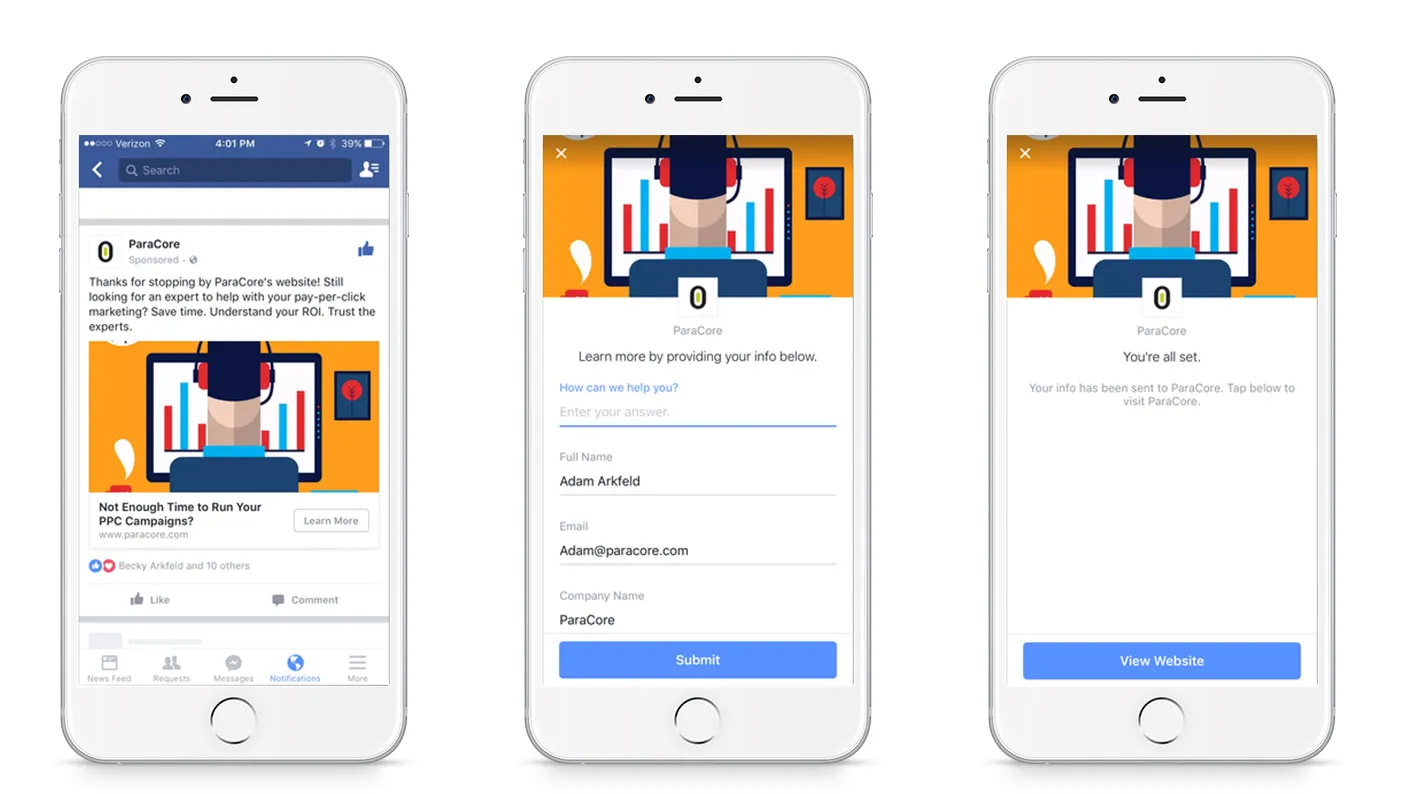
On Facebook, businesses have the unique advantage of connecting directly with their target audience in a space where they're already engaged and active.
The types of leads that can be captured on Facebook can broadly be classified into two categories: direct leads and indirect leads.
Each type serves different stages of the customer journey and fulfills various marketing objectives.
Direct Leads
Direct leads are generated when individuals provide their contact information in exchange for something they find valuable, such as a free trial, a discount code, an eBook, or a webinar registration.
This exchange typically occurs through Facebook Lead Ads, where users can easily submit their details through pre-populated forms without leaving the platform.
The key characteristic of direct leads is the immediate transactional nature of the interaction. The user shows a clear interest in your offer by submitting their information, making them a warmer lead ready for further engagement.
Businesses value direct leads because they represent individuals who have shown a genuine interest in their product or service and are closer to making a purchasing decision.
Indirect Leads
Indirect leads are gathered through a more nuanced approach. Instead of directly asking for contact information, businesses provide valuable content or experiences that indirectly encourage users to engage with the brand.
This can include content marketing efforts like informative blog posts, engaging videos, interactive quizzes, or compelling infographics shared on your Facebook page.
The goal here is to build a relationship and establish trust with potential customers. Indirect leads may not provide their contact information right away, but they become familiar with your brand through consistent value-driven engagement.
Over time, these leads can be nurtured through targeted content and offers, gradually moving them down the sales funnel toward becoming direct leads and, eventually, customers.
The Importance of Lead Generation on Facebook

Here’s why generating leads on Facebook is so crucial:
1. Access to a Massive Audience
With over 2 billion monthly active users, Facebook offers a vast pool of potential customers for businesses across various industries. This large audience base allows businesses to reach a broad spectrum of users who might be interested in their products or services.
2. Highly Targeted Advertising
Facebook’s sophisticated advertising tools enable businesses to target users based on detailed criteria, including demographics, interests, behaviors, and more. This level of targeting ensures that your lead generation efforts are directed at the audience most likely to engage with your brand, increasing the quality and relevance of the leads you capture.
3. Cost-Effectiveness
Compared to traditional advertising mediums, Facebook can be more cost-effective, especially for small to medium-sized businesses. With the ability to set and adjust your ad budget in real time, businesses can optimize their spending for the best possible return on investment (ROI) in terms of leads generated.
4. Versatility of Content
Facebook supports a wide range of content formats, from text and images to videos and live broadcasts. This versatility allows businesses to create engaging and interactive content that can attract and capture leads in various stages of the customer journey.
5. Engagement and Interaction
Facebook is inherently social, which means businesses can engage with potential leads conversationally and interactively. This engagement builds trust and fosters relationships with potential customers before they even enter the sales funnel.
6. Integration with Other Marketing Efforts
Leads generated on Facebook can be seamlessly integrated into broader digital marketing strategies, including email marketing, content marketing, and other social media platforms.
How to get started with Facebook Lead Ads
How Do Facebook Lead Ads Work?
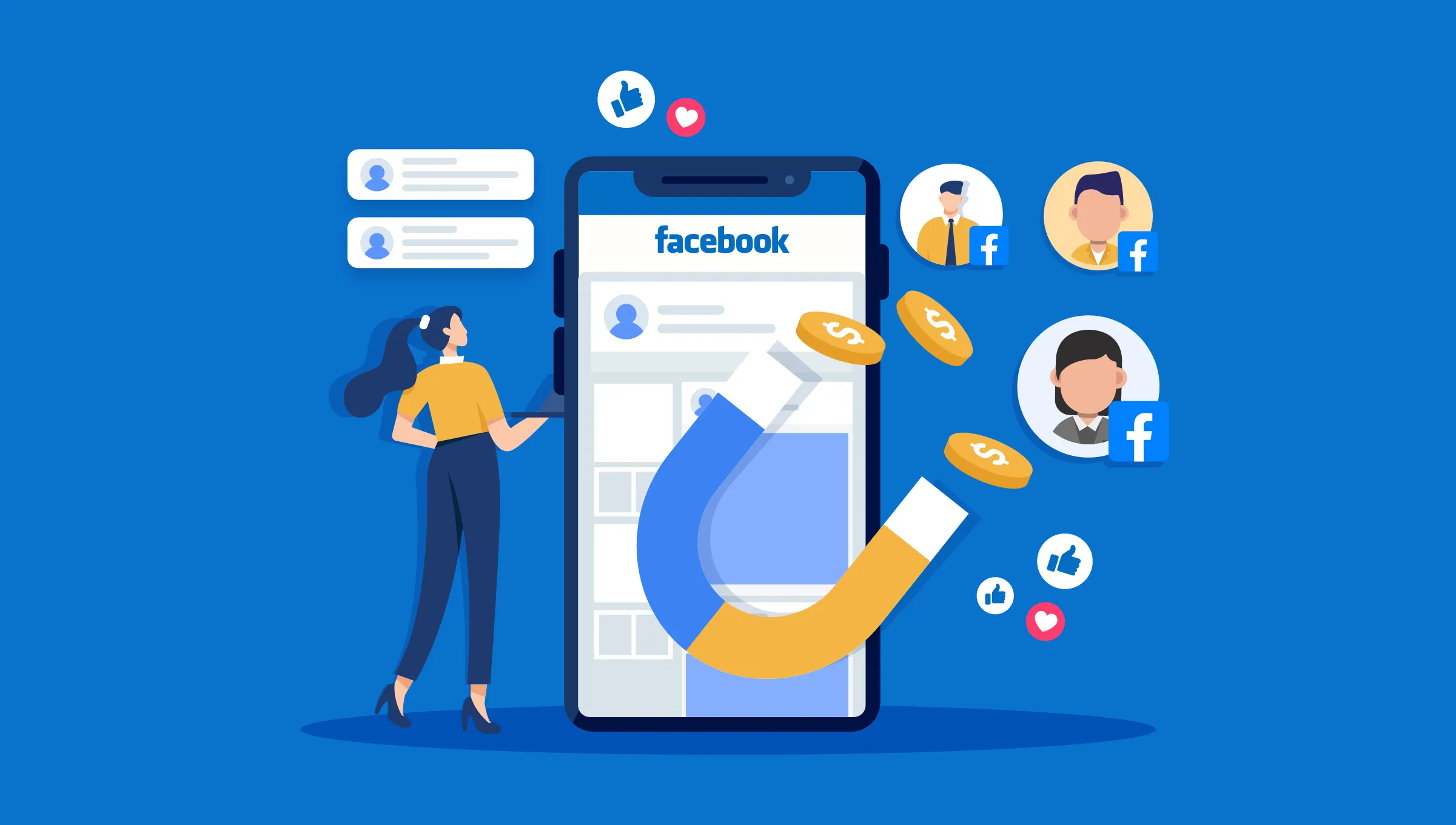
Facebook Lead Ads streamline the lead generation process within the Facebook and Instagram platforms, making it easier for businesses to gather information from potential customers and for users to submit their interests without leaving the app.
Here's a breakdown of how Lead Ads work, leveraging the content provided:
1. Setting Up the Ad
- You start by creating a Lead Ad through Facebook's Ads Manager, where you have the ability to customize your ad's targeting, creative assets, and budget. This customization ensures that your ad reaches the people most likely to be interested in your offering.
2. Reaching Potential Customers
- Facebook uses the details you've entered, such as targeting criteria and ad objectives, to display your ads to users who are most likely to be interested in what you're offering.
- This targeting capability is a core feature of Facebook's advertising platform, allowing you to reach potential customers effectively.
3. Ad Appearance
- The ad appears in users' news feeds, looking similar to organic posts but marked as "sponsored." This seamless integration helps maintain the user experience while clearly indicating the promotional nature of the content.
4. Lead Generation Offer
- Your Lead Ad promotes a specific offer designed to gather leads — for instance, a discount coupon code for signups to your product or service.
- This offer incentivizes users to engage with your ad and share their personal information.
5. User Interaction with the Ad
- When a user clicks the call-to-action (CTA) button on your ad, Facebook presents a form pre-filled with their information, such as their name, email, or phone number.
- This pre-filled form significantly reduces friction, making it easier and faster for users to sign up and receive your offer without the need for manual data entry.
6. Submission and Follow-Up
- After a user submits the form, they receive a confirmation, such as a "Thank You" message, within the app. Depending on your setup, this could include delivering the discount code directly in-app or via email.
- This immediate feedback loop confirms to the user that their submission was successful and provides them with the promised offer.
7. Nurturing New Leads
- Once the lead form is submitted, you gain access to a new potential customer's information, which you can then use to nurture and qualify as part of your broader marketing efforts.
- This process allows for efficient collection and management of leads, directly feeding into your sales funnel.
How to Set Up Your Facebook Ads
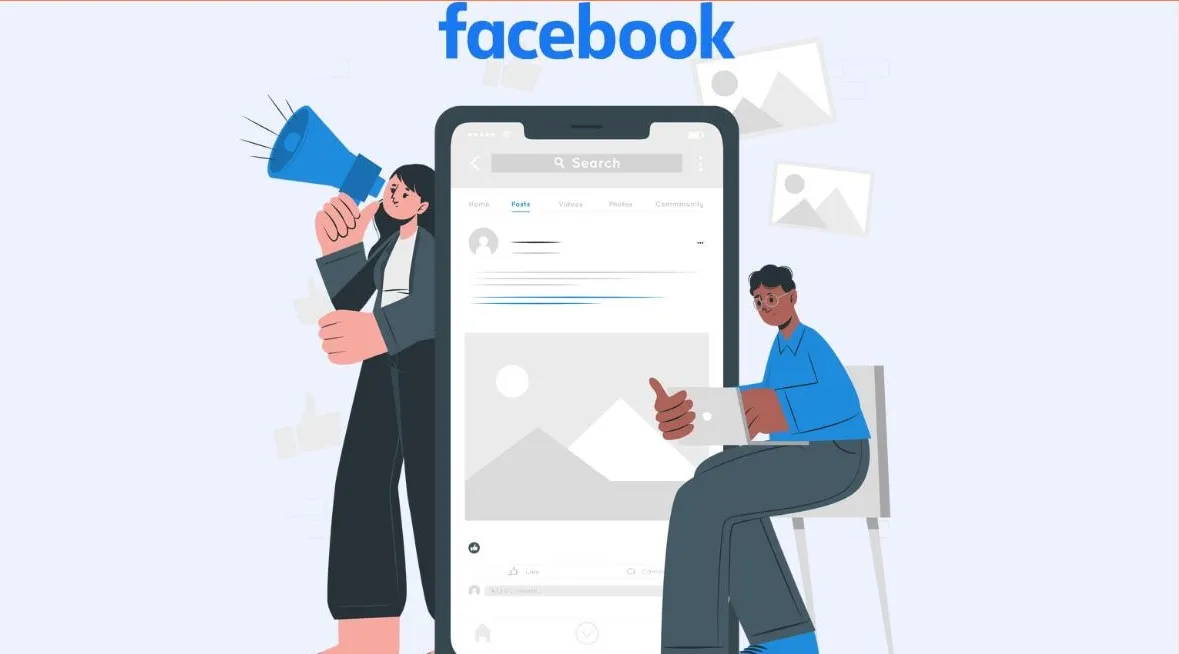
Setting up Facebook ads involves several key steps to ensure your campaigns are well-targeted, engaging, and effectively drive your desired outcomes.
Let's break down the process:
Define Your Objectives
Before diving into ad creation, clearly define your advertising objectives.
Whether it's increasing brand awareness, driving website traffic, generating leads, or boosting sales, understanding your goals will inform your ad strategy.
Access Facebook Ads Manager
Log in to your Facebook Ads Manager account. If you don't have one, you can create it easily through your Facebook account.
Campaign Creation

Click on the "Create" button in Ads Manager to start a new campaign. Choose your campaign objective based on your defined goals. Facebook offers a variety of objectives, including awareness, consideration, and conversion.
Ad Set Configuration
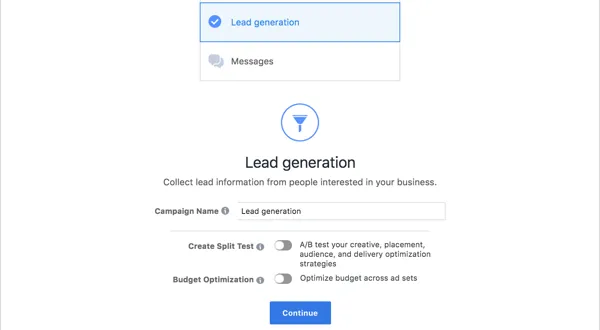
Within your campaign, you'll create an ad set. Here, you'll define your audience, budget, schedule, and placement preferences.
- Audience Targeting: Utilize Facebook's robust targeting options to reach your desired audience based on demographics, interests, behaviors, and more.
- Budget and Schedule: Set your ad budget and schedule. You can choose between a daily or lifetime budget and specify the start and end dates of your campaign.
- Ad Placement: Determine where your ads will appear across Facebook's network, including the Facebook News Feed, Instagram, Audience Network, Messenger, and more.
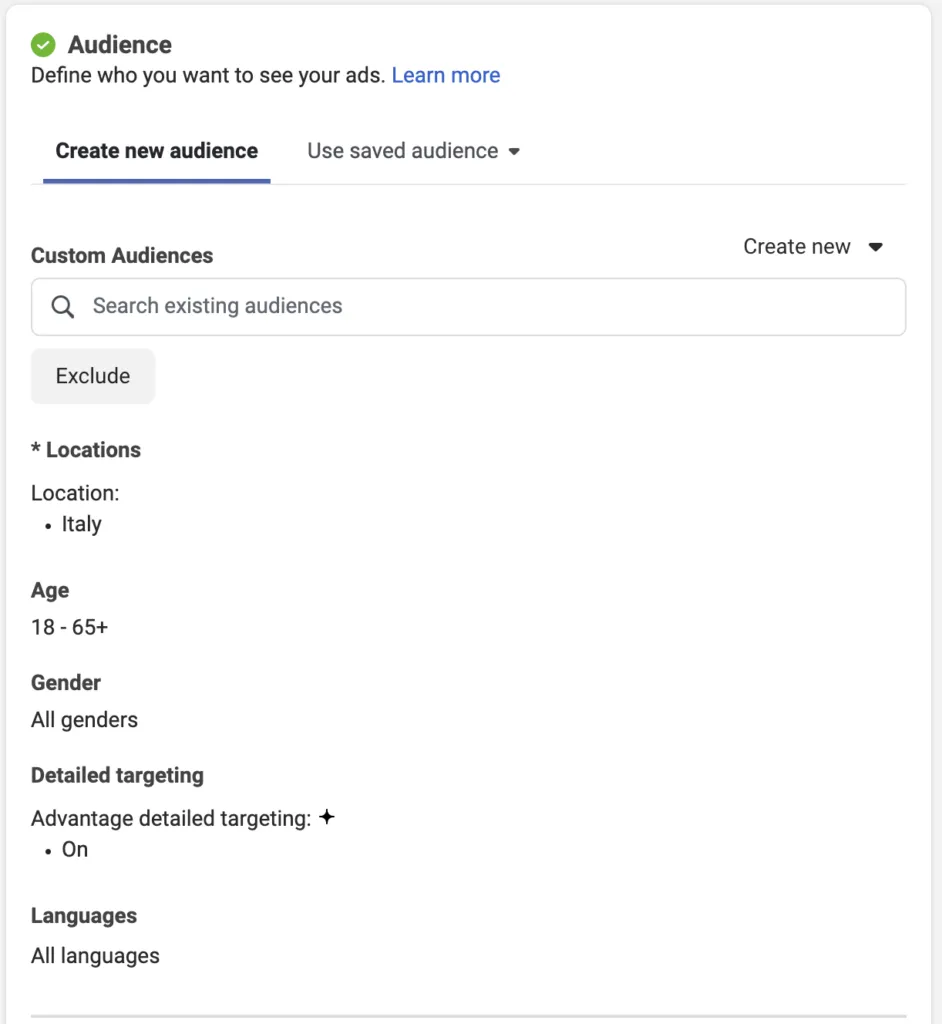
Ad Creation
After configuring your ad set, it's time to create your ad. Choose the ad format that best suits your objectives and audience.
- Ad Format: Facebook offers various ad formats, including image ads, video ads, carousel ads, slideshow ads, and more. Select the format that aligns with your content and messaging.
- Ad Creative: Upload your visuals (images or videos) and craft compelling ad copy. Ensure your visuals and copy are attention-grabbing and relevant to your target audience.
- Call-to-Action (CTA): Choose a clear and actionable CTA button that encourages users to take the desired action, such as "Shop Now," "Learn More," or "Sign Up."
Review and Publish
Before publishing your ads, review all elements to ensure accuracy and effectiveness. Preview your ads to see how they will appear to your audience. Once satisfied, click "Publish" to launch your ads.
Monitor and Optimize
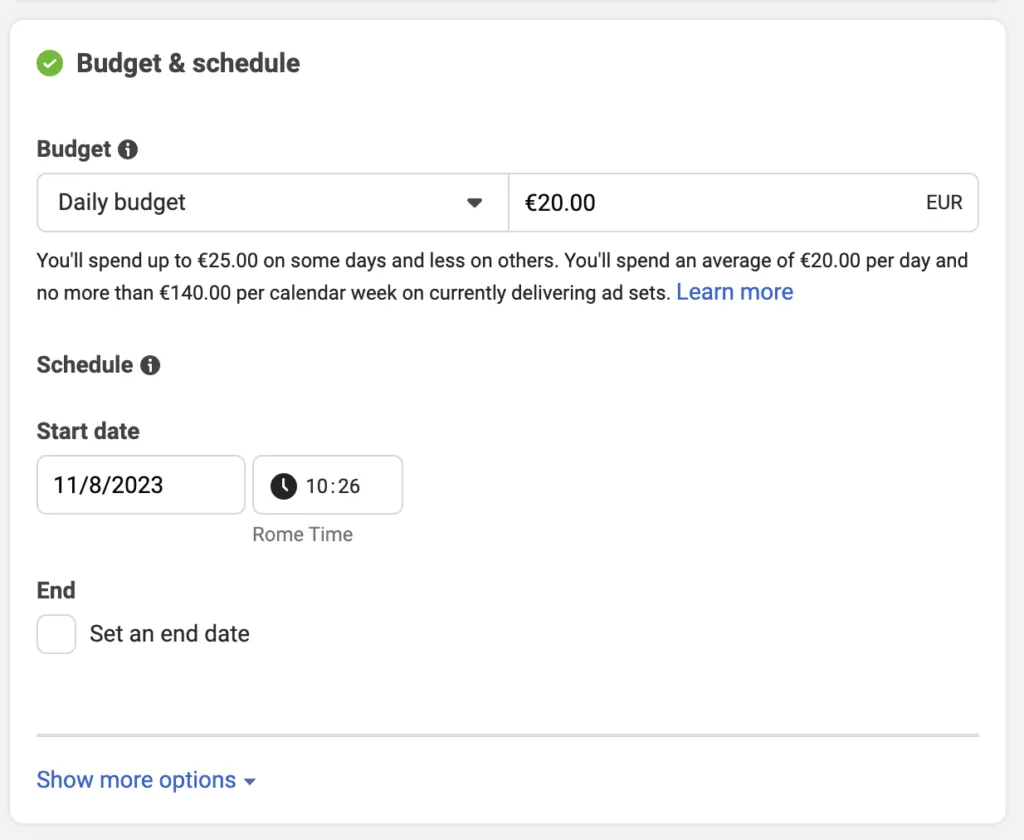
After your ads are live, monitor their performance regularly using Facebook Ads Manager. Track key metrics such as reach, engagement, click-through rate (CTR), conversion rate, and return on ad spend (ROAS). Based on performance insights, adjust your targeting, creative elements, and budget allocation to optimize campaign effectiveness and achieve your objectives.
A/B Testing
Experiment with different ad creatives, audiences, and messaging through A/B testing. This allows you to identify which elements resonate best with your audience and drive superior results.
Example of a Facebook Ad Setup
Let's create an example of a Facebook ad setup to create lead ads, including all elements from targeting to the ad creative, focusing on a specific scenario. We'll use a fictional boutique fitness studio named "Zenith Fitness" launching an online workout subscription service.

Campaign Execution:
- Launch Ad: After setting up the ad in Facebook Ads Manager, launch the campaign with the specified targeting, budget, and schedule.
- Monitor Performance: Regularly check the campaign's performance metrics, such as click-through rate (CTR), lead quality, and conversion rate. Adjust targeting, budget, or creative elements as necessary to optimize the campaign.
- Follow-up: Ensure there's a system in place to immediately follow up with leads generated from the ad. This could involve sending an automated welcome email with instructions on how to start the free trial.
How to Design Your Facebook Lead Ad

Designing an effective Facebook Lead Ad involves several key steps, focusing on both the visual appeal and the strategic elements of your ad to ensure it resonates with your target audience and encourages them to submit their information.
1. Access Ads Manager:
- Log in to your Facebook Ads Manager account.
2. Create a New Campaign:
- Click on the "Create" button to start a new campaign.
- Select "Lead Generation" as your campaign objective.
3. Set Up Your Ad Set:
- Define your target audience, budget, schedule, and placement preferences within your ad set.
- Choose where you want your lead ads to appear across Facebook's network.
4. Choose the Right Format
Facebook Lead Ads offer various formats, including single image, video, carousel, and slideshow. Select a format based on what best showcases your offer and appeals to your target audience.
For example, a video might be more engaging if you're demonstrating a product, while a carousel could be ideal for highlighting multiple benefits or features.
5. Create Compelling Visuals
Your ad's visual elements are the first thing people will notice, so make them count:
- Use high-quality images or videos that are relevant to your offer and appealing to your target audience.
- Ensure branding consistency by using your brand's colors, fonts, and style to make your ad instantly recognizable.
- Keep it simple by avoiding cluttered visuals that can distract from your main message.
6. Craft a Clear and Concise Message
The text accompanying your visuals should clearly communicate the value of what you're offering:
- Headline: Keep it short and impactful, focusing on the main benefit or value proposition of your offer.
- Ad Text: Provide additional details about your offer, keeping it concise and to the point. Highlight what makes your offer unique or valuable.
- Call to Action (CTA): Use a strong CTA that encourages users to take action, such as "Sign Up," "Download," or "Learn More." Ensure the CTA aligns with your campaign objective.
Here are examples of how to articulate your messages for different parts of the ad, specifically tailored to the boutique fitness studio offering a free trial class.
Headline: "Free Trial: Transform Your Workout Today!"
Primary Text: "Kickstart your fitness journey with a FREE trial class at [Studio Name]. Discover a community where fitness meets fun, and every workout is an opportunity to empower yourself. Claim your spot now!"
Description (Below the Headline): "Limited spots available. Join our fitness family today!"
Call-to-Action (CTA): "Sign Up" (This should be clear and direct, urging the user to take immediate action.)
Instant Form Introduction: "You're one step away from your best self! Fill out this quick form to unlock your free trial class at [Studio Name]. Let's get moving!"
Completion Message: "Thanks for signing up! Check your inbox for details on how to book your free trial class. We're excited to meet you!"
7. Optimize the Lead Form
The lead form is a critical component of your lead ad. Design it to make the submission process as easy as possible for users:
- Minimize the number of fields to only what's essential for your campaign goals. The fewer fields, the higher the likelihood of submission.
- Use pre-filled fields where possible, leveraging Facebook's capability to auto-populate information like name and email, reducing the effort required from users.
- Customize the form's greeting to make it welcoming and include a brief explanation of what users will receive by submitting the form.
8. Test and Refine
Designing an effective Facebook Lead Ad is an iterative process:
- A/B test different elements of your ad, such as the visuals, ad copy, and CTA, to see what combination performs best.
- Use Facebook's reporting tools to track the performance of your ads, focusing on metrics like lead quality, conversion rate, and cost per lead.
- Refine your ads based on performance data, making adjustments to improve results over time.
How to set up the Facebook Instant Form

Facebook Instant Forms, previously known as lead forms, are part of Facebook's Lead Ads offering. They provide a fast and privacy-safe way for businesses to collect information from Instagram and Facebook users.
What is a Facebook Instant Form
A Facebook Instant Form is a customizable, mobile-optimized form that opens directly within the Facebook or Instagram app when a user interacts with a lead ad.
These forms are designed to make it easy for users to submit their contact information to a business without having to leave the app or fill out lengthy forms manually. The forms can be pre-populated with information from the user's Facebook profile, further reducing the barriers to submission.
For What to Use Facebook Instant Form
Facebook Instant Forms can be used for a variety of purposes, including:
- Lead Generation: Collect leads for your business, such as email sign-ups, registrations for a webinar, or inquiries about your products or services.
- Event Registrations: Gather sign-ups for an upcoming event or conference.
- Product or Service Inquiries: Allow potential customers to ask for more information about what you're offering.
- Newsletter Sign-ups: Build your email list by offering sign-ups directly through Facebook.
How to Use Facebook Instant Form
Designing your Facebook Lead Ad involves creating compelling visuals and persuasive copy that capture users' attention and encourage them to engage with your offer. Here's a step-by-step guide on how to design your Facebook Lead Ad effectively:
1. Access Ads Manager
First, navigate to your Facebook Ads Manager. This is where you'll manage all your ad campaigns, including those for lead generation.
2. Create Your Lead Ad Campaign
Start a New Campaign: Choose ‘Lead generation’ as your campaign objective. This is crucial because it unlocks the features needed to create an Instant Form.
Name Your Campaign: Give your campaign a clear, identifiable name that reflects the objective or the audience you're targeting.
3. Choose Your Audience, Placements, and Budget
Target Audience: Define who you want to see your ads. You can target based on demographics, interests, behaviors, and more.
Ad Placements: Decide where your ads will be shown. You can let Facebook automatically place your ads for optimal performance or choose placements manually.
Budget and Schedule: Set how much you want to spend and when you want your ads to run. You can opt for a daily budget or a lifetime budget for the campaign duration.
4. Design Your Ad
Select Ad Format: Choose the format of your ad (e.g., image, video, carousel).
Upload Creative Assets: Add the images or videos you want to use in your ad.
Craft Your Ad Copy: Write compelling ad text and headlines. Ensure your message is clear and includes a call to action (CTA) encouraging users to fill out the form.
5. Create the Instant Form
Open the Instant Form Builder: After designing your ad, you'll see an option to create a new form. Click on it to start building your Instant Form.
Choose Form Type: Select whether you want a ‘More Volume’ form (simpler, designed for higher completion rates) or a ‘Higher Intent’ form (includes a review step before submission).
Customize the Form:
- Intro (optional): Add an introduction to your form. This can include a greeting, an image, and a brief explanation of what users are signing up for.
- Questions: Choose the information you want to collect from users. Facebook offers standard questions (like contact details) and allows you to create custom questions.
- Privacy Policy: Include a link to your privacy policy. This is mandatory as you’re collecting personal information.
- Completion: Customize the thank you screen. This can direct users to your website, offer a download, or simply thank them for their submission.
Review and Save: Once you’ve customized your form, review it to ensure all details are correct, then save your form.
6. Finalize and Launch
After creating your Instant Form, finish setting up your ad details in Ads Manager. Then, review your campaign settings and submit your ad for review. Once approved by Facebook, your ad will go live, and you'll start collecting leads through your Instant Form.
7. Monitor and Optimize
Keep an eye on your campaign’s performance. Use the insights provided by Facebook to adjust your targeting, ad creative, or form details to improve lead quality and quantity.
Example
Imagine you run a boutique fitness studio and want to use Facebook Instant Forms to increase sign-ups for a free trial class. Here's how you could set it up:
- Create a Lead Ad targeting people in your city interested in fitness and wellness.
- Design Your Ad with compelling images of your classes in action and a clear CTA like "Sign up for a free trial class!"
- Set Up Your Instant Form to collect names, email addresses, and phone numbers. Add a custom question asking which fitness class they're most interested in to personalize follow-ups.
- Customize the Greeting Message to warmly invite potential customers to join your fitness community and the completion message to thank them for signing up, with a note that they'll be contacted soon with details.
- Launch and Monitor your campaign, optimizing for the best results based on the leads you receive.
How to Generate Leads on Facebook

Generating leads on Facebook involves a multi-faceted approach that leverages both organic and paid strategies. Facebook, with its vast user base, offers businesses a powerful platform to identify and attract potential customers. Here's an in-depth look at how to effectively generate leads on Facebook:
1. Optimize Your Facebook Page
- Complete Your Profile: Ensure that all information is complete and up-to-date. This includes your contact information, about section, and profile and cover photos.
- Call-to-Action Button: Utilize the CTA button feature on your page. You can customize it to send messages, visit a website, or call now, depending on what action you want your leads to take.
2. Create Engaging Content

- Valuable Content: Post content that is relevant and valuable to your target audience. This could be tips, articles, videos, or infographics.
- Engagement: Encourage interaction through questions, polls, and contests. Engagement can help increase the visibility of your posts.
- Live Videos: Utilize Facebook Live to engage with your audience in real-time. Live videos often receive higher engagement rates.
3. Utilize Facebook Stories
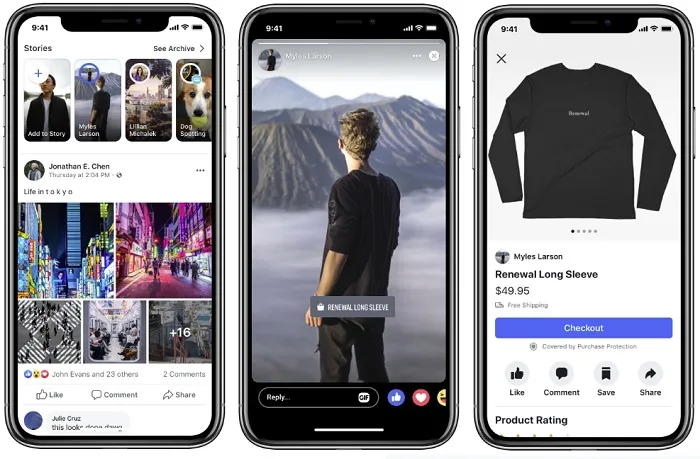
- Stories for Promotions: Use Facebook Stories to share behind-the-scenes content, limited-time offers, or exclusive updates. Stories are prominently displayed and can capture users' attention effectively.
4. Leverage Facebook Groups
- Join Relevant Groups: Participate in or create Facebook Groups for facebook leads ads that are relevant to your industry or target audience. Engage with the community by providing valuable insights and solutions.
- Create Your Own Group: This can foster a community around your brand, allowing for direct engagement with potential leads.
5. Implement Facebook Ads
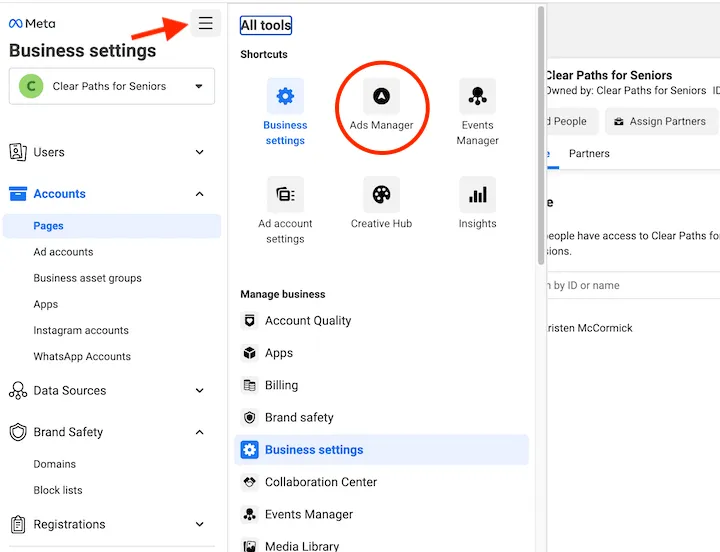
- Targeted Advertising: Use Facebook’s targeting options to reach specific demographics, interests, behaviors, and locations. Tailoring your ads can significantly increase conversion rates.
- Lead Generation Ads: Facebook offers a specific ad format for lead generation, which allows users to submit their contact information without leaving the platform.
- A/B Testing: Regularly test different ad formats, images, headlines, and call-to-actions to see what works best with your target audience.
6. Use Facebook Insights

- Analyze Performance: Use Facebook Insights to track the performance of your posts, ads, and overall page. This data can help you understand what content resonates with your audience.
- Adjust Strategy: Based on insights, adjust your content and ad strategies to improve engagement and lead generation.
7. Integrate Facebook Messenger

- Chatbots: Implement chatbots to instantly respond to inquiries. This can help capture leads when they are most engaged.
- Personalized Messages: Use Messenger to send personalized messages or offers to people who have interacted with your page or ads.
8. Landing Pages and Offers

- Exclusive Offers: Create offers or content exclusively for your Facebook audience to encourage them to provide their contact information.
- Optimized Landing Pages: Ensure that the landing pages you link to from Facebook are optimized for conversion, with clear calls-to-action and minimal distractions.
9. Follow Up and Nurture
- Email Marketing: Once you capture leads, follow up with an email marketing campaign to nurture these leads towards conversion.
- Customer Relationship Management (CRM): Use a CRM to manage and analyze customer interactions and data throughout the customer lifecycle.
Facebook Lead Ads vs. Conversion Ads: A Comparative Analysis

How much does a Facebook lead generation campaign cost?

The cost for a successful lead ads campaign can vary widely depending on several factors including targeting, competition, ad quality, industry, and the geographic location you're targeting.
Since there's no one-size-fits-all answer, let's break down the elements that influence costs and provide some benchmarks to give you a general idea.
Factors Influencing Cost
- Target Audience: Highly competitive audiences can drive up costs. For example, targeting high-income consumers in urban areas may be more expensive than targeting a general audience.
- Ad Quality and Relevance: Facebook rewards ads that engage users by potentially lowering the cost per action. High-quality, relevant ads often result in lower costs.
- Bidding Strategy: You can opt for automatic or manual bidding. Automatic bidding lets Facebook optimize your bid, while manual bidding gives you control but requires understanding of the optimal bid for your goals.
- Industry: Some industries, like finance and insurance, typically have higher costs per lead due to high competition and the high value of a conversion.
- Geographic Location: Advertising costs can vary by country and region, reflecting the local market's competitive landscape.
- Time of Year: Costs can increase during peak advertising periods, such as holidays.

Cost Benchmarks
- Average Cost Per Click (CPC): Ranges from $0.50 to $2.00, but this can fluctuate based on the factors mentioned above.
- Cost Per Lead (CPL): This is more specific to lead generation campaigns. CPL can range widely, from a few dollars to over $50 in more competitive industries. For instance, a B2B company might see higher CPLs due to the complex nature of the sales cycle and the higher value of each conversion.
Budget Recommendations
For new advertisers, starting with a modest daily budget (e.g., $20-$50) allows for testing and learning without significant risk.
Monitor performance closely and be prepared to adjust your spend based on initial results and campaign objectives.
How to Utilize Facebook Lead Ads Integrations for Increasing Performance
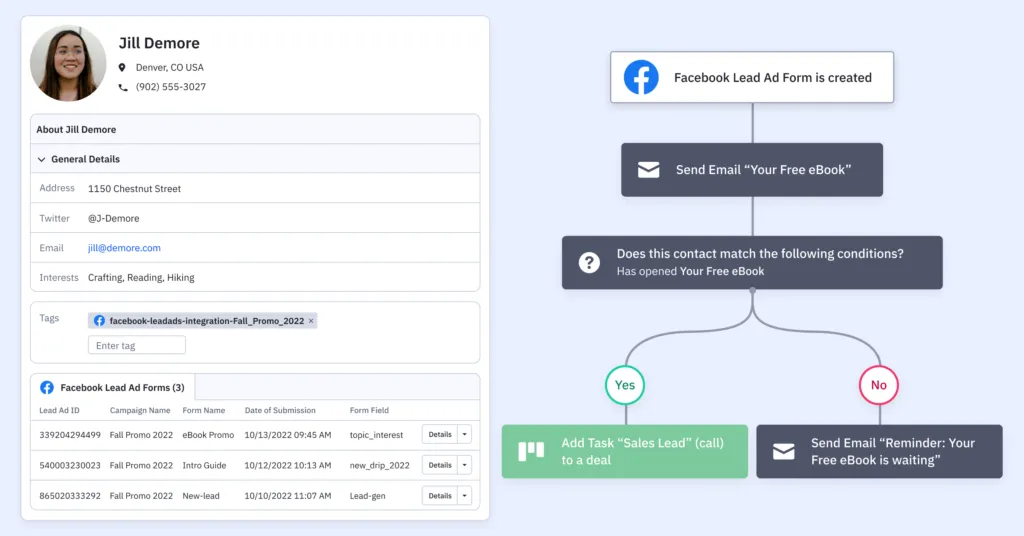
By integrating Facebook Lead Ads with other tools and platforms, businesses can significantly enhance their lead management processes, improve lead quality, and ultimately increase their conversion rates.
Here's how to utilize Facebook Lead Ads integrations for increasing performance:
1. Connect to a CRM System
Integrating your Facebook Lead Ads with a Customer Relationship Management (CRM) system is crucial. This allows for automatic transfer of leads from Facebook to your CRM, ensuring that no lead is lost and enabling quick follow-up actions.
- Automate Lead Sync: Use tools like Zapier, LeadsBridge, or direct integrations offered by your CRM to automate the import of leads from Facebook.
- Immediate Follow-Up: With leads instantly in your CRM, you can set up automatic email responses or task assignments for sales reps, ensuring that leads are contacted promptly.
2. Email Marketing Automation
Connecting your leads with email marketing software can help you nurture leads that are not yet ready to make a purchase.
- Segmentation: Automatically add new leads to specific email lists based on their interests indicated in the lead form.
- Nurture Campaigns: Start sending targeted, automated email sequences to provide more information, build trust, and guide leads through your sales funnel.
3. Analytics and Tracking
Integrate Facebook Lead Ads with analytics and tracking tools to measure and optimize the performance of your campaigns.
- Conversion Tracking: Use Facebook Pixel or integrate with Google Analytics to track the actions leads take after clicking on your ad.
- Optimization: Analyze which ads and targeting options bring in the highest quality leads and adjust your campaigns accordingly.
4. Messaging Apps Integration
Integrating Facebook Lead Ads with messaging apps like WhatsApp or Facebook Messenger can provide a direct line of communication to your leads.
- Instant Engagement: Set up automated messages or chatbots to engage leads immediately after they submit their information.
- Personalized Interaction: Use these platforms to answer questions, provide additional information, and move leads further down the sales funnel.
5. Use Lead Ads in Combination with Retargeting Campaigns
Leverage the data from your Lead Ads to create retargeting campaigns for users who have interacted with your ads but haven't converted yet.
- Custom Audiences: Create custom audiences in Facebook Ads Manager for users who engaged with your Lead Ads but did not submit a form.
- Tailored Messages: Design retargeting ads with messages tailored to their level of interaction or interest shown in the initial lead ad.
6. Offer Valuable Lead Magnets
- Lead magnets, such as ebooks, webinars, discount codes, or free trials, are crucial for attracting leads.
- Ensure your lead magnet is highly relevant and offers tangible value to your target audience, compelling them to exchange their contact information.
Facebook Lead Ad Examples








.jpg)

.jpg)
